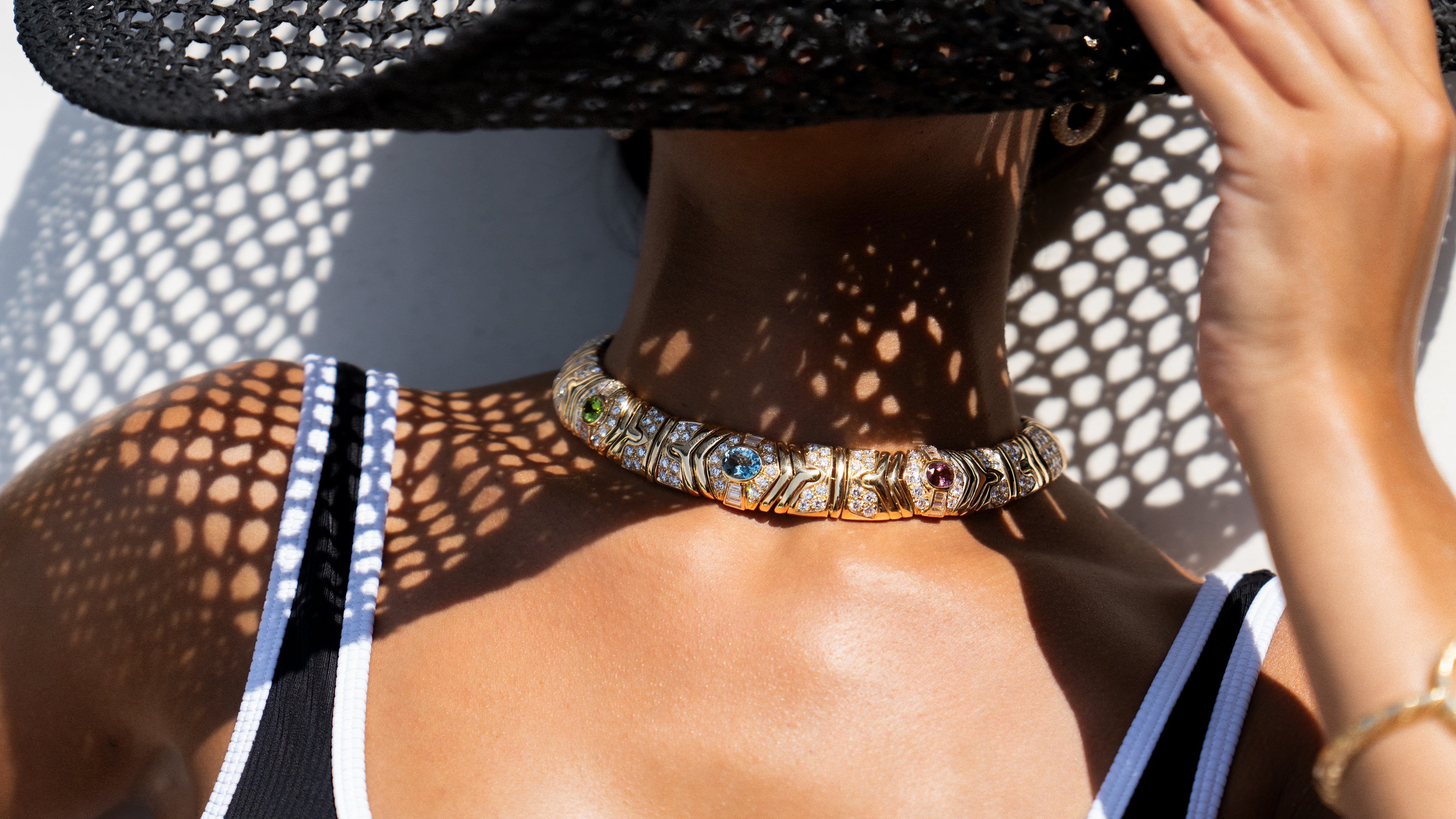Maison Chaumet
Chaumet endured a turbulent history that saw the demise of French royalty, the rise and fall of an empire, and much more over two centuries.
1780-1815: Jeweler to King and Emperor
Before there was a Chaumet, there was Marie-Étienne Nitot, a jeweler who learned his craft at Aubert, the jeweler to Queen Marie-Antoinette. Nitot enjoyed the custom of many a loyalist until the French Revolution in 1789. Nitot quickly made the switch, and in 1802, the jeweler found himself the jeweler to Napoleon I.
Aided by Françoise Regnault, Nitot created the jewelry that would symbolize the splendor and power of the French Empire. Nitot created Napoleon’s wedding jewelry, coronation crown, and many other pieces designed for the French court.
Beginning in the early 19th Century, the firm started to produce quality timepieces as well as jewelry. A pair of bracelet watches were commissioned in 1811 by Eugéne de Beauharnais, the adopted stepson of Napoleon I. The watches were crafted of gold and decorated with pearls and emeralds.
Upon Marie-Étienne’s death in 1809, François took over his father’s business. François, a faithful follower of Napoleon, sold the company to his foreman, Jean-Baptiste Fossin, following Napoleon’s exile in 1815.
1815-1885: Changing Hands
Romantic jewelry pieces inspired by the 18th Century French style and the Italian Renaissance were the specialty of Fossin, who led the business with the help of his son, Jules. Nature themes also influenced the two. They found a clientele in the elite of society, including the Duchesse de Berry and other members of the royal family, as well as artists and authors, French and foreign.
Under the supervision of Jean-Valentin-Morel and his son, Prosper, the jeweler opened a workshop in London. The British boutique quickly drew an impressive list of clientele, including a royal warrant from Queen Victoria. Morel received accolades at the World’s Fair of 1851, producing hardstone goblets and enameled mounts, employing techniques used in the 16th and 17th Centuries.

1885-1907: Chaumet Takes the Helm
The marriage between Prosper Morel’s daughter and Joseph Chaumet heralded a new manager, along with the company name that would ultimately define the Maison’s brand.
The Renaissance-style could still be found in many of the early Chaumet pieces, in particular for tiaras, which were in fashion at the time. Another influence was Japanese art, a form that was gaining in popularity.
In 1907, the boutique and workshops moved to 12 Place Vendôme, which would become Chaumet’s permanent home.
1908-1944: Art Deco and World Wars
The 1925 Paris Exposition des Arts Décoratifs brought acclaim to the Maison Chaumet, with more geometric jewels, trending with the “boyish style” that followed the end of the Great War. The jeweler, with locations in seaside resorts such as Cannes and Deauville, enhanced its reputation with the smart set.
In 1928, during the height of the Art Deco era, Marcel Chaumet, Joseph’s son, took over the business from his father.
In the 1930s, Chaumet pieces would return to a more feminine look, with a focus on color, and as always, expert craftsmanship that reflected the highest quality.
Following the Second World War, Chaumet found a following in the emergence of “New Look” pioneers Yves St. Laurent and Christian Dior, sealing the Maison’s reputation with society’s fashionistas.



1944-1987: Prosperity and Bankruptcy
Marcel Chaumet’s sons became executive directors of the business in 1958. Twelve years later, they acquired the Breguet brand and positioned the watchmaker in the high-end segment.
Originality was the watchword of the 1970s. Parings of exquisite diamonds with colorful coral and semi-precious gems such as peridot were set in yellow gold.
René Morin created the first Lien piece for Chaumet in 1977. Lien, French for “link,” was inspired by the motif that made its debut during the Belle Époque. The first piece produced was a ring that featured a band encircled by a golden buckle at its center. The collection has evolved over the years to include diamonds and other gemstones set in yellow, white, and rose gold.
Poor business decisions and legal woes marked the end of the Chaumet family’s involvement with the firm. In 1987, the business was purchased by a British investment firm and was later acquired by luxury goods purveyor LVMH.
Modern Times
Expansion beyond its prime location at Place Vendôme helped to revive the prestigious jeweler, which had been viewed by many as a sleeping beauty.
Recent jewelry collections have paid homage to some of the earliest creations of the Maison. One such piece is an exquisite convertible diamond necklace that recalls the kokoshnik, a traditional Russian headdress. Another, inspired by Empress Joséphine, is a ring in the shape of a tiara, whose focal point is a large pear-shaped diamond.
The “Bee My Love” Collection celebrates the emblem used by both Napoleon and the Maison Chaumet. The bee has come to symbolize romance, and the modern collection uses honeycomb themes. Stackable wedding rings are fashioned in yellow, white, and rose gold.
Modern-day celebrity fans of Maison Chaumet reside around the world, including American actress Angela Jolie, Chinese superstar Angela Yeung (“Angelababy”), and French-Ukrainian actress Olga Kurylenko.


Museum Quality
Maison Chaumet established its Musée Ephémère to house hundreds of its historic jewel and timepiece creations. In addition, the museum possesses 80,000 drawings plus 2,000 diadems and replica pieces.
